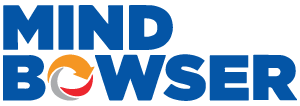The demand for home health rehabilitation services has surged recently, with many patients preferring to recover in their homes. According to Grandview research data, the home healthcare market is expected to reach $515.6 billion by 2027, reflecting the increasing reliance on in-home care solutions. This trend underscores the need for efficient and effective rehabilitation services that can be delivered outside of traditional clinical settings.
Technology is playing an important role in transforming home health rehabilitation. Innovations in telehealth, remote monitoring, and digital therapy tools make it easier for healthcare providers to offer high-quality care in a home environment. These advancements improve patient outcomes by providing timely and personalized interventions. They help caregivers manage their workloads more effectively, addressing common challenges such as manual record-keeping and limited patient monitoring capabilities.
➡️ Key Technologies Transforming Home Health Rehabilitation
Technological advancements drive significant changes in home health rehabilitation, offering innovative solutions that improve care delivery. These tools, from telehealth platforms to wearable devices, make rehabilitation more accessible, efficient, and effective. Understanding these technologies is crucial for healthcare providers aiming to improve patient outcomes and streamline rehabilitation services.
1️⃣ Rehabilitation Software Development
Rehabilitation software development is becoming essential as the demand for digital solutions in healthcare continues to grow. EHRs are particularly important in this context as the backbone for integrating various rehabilitation tools and ensuring patient data is accurate, accessible, and securely shared across platforms. By incorporating EHRs into digital rehabilitation software, healthcare providers can track patient progress, adjust treatment plans in real-time, and maintain a cohesive flow of information that supports better outcomes in home health rehabilitation.
Examples of such software include platforms for physical therapy, occupational therapy, and speech-language therapy, each offering unique features tailored to specific rehabilitation needs. These different versions of rehabilitation software provide customized functionalities that address the diverse requirements of various therapeutic disciplines.
Comprehensive Patient Management Software
Integrated patient management systems are crucial for scheduling, documentation, and treatment tracking in home health rehabilitation. These systems streamline administrative tasks, reduce errors, and ensure patients receive consistent, high-quality care. Effective management tools also allow clinicians to focus more on patient care and less on paperwork and skip manual record-keeping, ultimately improving the efficiency of rehabilitation services.
Case Study:
We integrated digital rehabilitation technologies to boost patient outcomes and optimize care. Combining teletherapy with virtual reality and wearable devices, this platform offers a modern rehabilitation approach.
Patients enjoy remote therapy sessions from home, engaging VR exercises for motivation, and real-time progress tracking via wearables. This data-driven method enables custom treatment plans and timely adjustments.
Mindbowser excels at developing innovative solutions customized to the specific needs of home health rehabilitation, such as automated patient management systems and remote patient monitoring. Utilizing extensive healthcare expertise, Mindbowser creates software that seamlessly integrates essential functions, empowering clinicians to streamline patient care and prioritize what truly matters—enhancing patient outcomes.
Discover How Technology can Elevate Your Home Health Rehabilitation
2️⃣ Telehealth Platforms
Telehealth platforms are reshaping healthcare delivery by offering remote access to care. These platforms provide a practical solution for conducting therapy sessions and monitoring patients without needing in-person visits. By integrating advanced tools, telehealth ensures continuous patient engagement and efficient management, making care more accessible and effective.
Related Read: Future of Telemedicine in the USA with its Benefits & Challenges
Virtual Sessions
Telehealth platforms facilitate remote therapy sessions, allowing patients to receive care from the comfort of their homes. This reduces the need for in-person visits, making therapy more accessible, especially for those with mobility challenges or living in remote areas. With virtual sessions, healthcare providers can maintain consistent patient engagement and deliver timely care without the logistical constraints of traditional appointments.
Patient Monitoring
Continuous patient monitoring through telehealth offers significant benefits. It allows healthcare providers to track patient progress by surpassing limited patient monitoring capabilities and respond swiftly to changes in their condition. Solutions like CareCloud and eClinicalWorks improve patient care by simplifying data integration and ensuring patient information is accessible across systems. This efficiency allows clinicians to make informed decisions based on real-time data, leading to better overall outcomes.

Free eBook on Telemedicine Platform Development
Years of research compiled into a comprehensive eBook documenting the most efficient path to developing a new digital health solution, including key features, cost of development, best practices to comply with HIPAA norms, and resources to accelerate and achieve digital health adoption.
3️⃣ Wearable Devices
Wearable devices offer continuous monitoring by tracking patient progress and vital signs in real-time. These devices provide valuable data that informs treatment decisions and helps in the early detection of potential issues.
Continuous Monitoring
Wearable devices provide ongoing patient progress and vital sign tracking, offering real-time insights into their health status. These devices monitor heart rate, activity levels, and sleep patterns, helping healthcare providers detect changes promptly and adjust care plans as needed.
Data Integration
Integrating data from wearables into patient management software is crucial for delivering holistic care. Solutions like WearConnect streamline this process, enabling the smooth incorporation of wearable data into existing systems. This integration ensures that healthcare professionals have a complete view of patient health, facilitating more informed decision-making and coordinated care.
➡️ Improving Patient Outcomes with Technology
Technology improves patient outcomes by enabling precise, data-driven care plans and adaptive therapies. Real-time data helps create customized rehabilitation strategies, while software adjusts plans dynamically based on patient progress.
🔹Data-Driven Decisions
Technology enables the development of personalized rehabilitation plans by analyzing real-time data from various sources, such as wearable devices and patient feedback. This data-driven approach ensures that each patient receives a rehabilitation plan addressing their needs and conditions. By utilizing insights from ongoing assessments, healthcare providers can adjust treatment strategies to optimize recovery, ensuring that interventions are relevant and effective.
🔹Adaptive Therapies
Advanced clinical trial solutions can dynamically adjust therapy plans based on continuous patient progress updates. As patients provide real-time feedback and their conditions change, these systems modify the rehabilitation protocols to reflect current needs. This adaptability ensures that treatment remains effective throughout recovery, addressing emerging issues and optimizing therapeutic outcomes. Such flexibility helps maintain engagement and improve overall patient results.
🔹Enhanced Patient Engagement
Patient engagement in rehabilitation is important for successful outcomes. Integrating technology into home health rehabilitation can significantly increase patient involvement, making therapies more interactive and effective.
Interactive Tools
Gamification and interactive tools can significantly boost patient motivation and adherence to rehabilitation exercises. By turning routine exercises into engaging activities, patients are more likely to complete their rehabilitation programs consistently. These tools often provide instant feedback and progress tracking, making the rehabilitation process more rewarding. This approach keeps patients engaged and helps healthcare providers monitor and adjust treatment plans based on real-time data, leading to more effective outcomes.
Remote Support
Telehealth plays a crucial role in providing immediate support and feedback to patients during their rehabilitation journey. With remote consultations, patients can easily contact healthcare professionals for guidance, ensuring they perform exercises correctly and stay on track with their recovery plans. This level of accessibility helps address patient concerns promptly, reduces the likelihood of complications, and improves overall satisfaction with the rehabilitation process.
🔹Enhancing Caregiver Efficiency
Improving caregiver efficiency is key to home health rehabilitation. Technology streamlines administrative tasks, reduces manual workload, and provides real-time patient data, allowing caregivers to focus more on patient care.
🔹Reducing Administrative Burden
Automated documentation through solutions like EHRConnect reduces the time caregivers spend on administrative tasks by streamlining record-keeping and appointment scheduling. This boosts workflow efficiency, allowing caregivers to dedicate more time to patient care.
Integrated communication tools further enhance care team coordination and improve patient outcomes, while chatbot automation manages routine inquiries around the clock, easing staff workload and minimizing burnout.
🔹Training and Development
Technology in home health rehabilitation facilitates both online training and detailed performance tracking. Online training modules offer accessible and flexible education options, allowing staff to stay up-to-date with current practices without disrupting their work schedules. Interactive features in these modules improve knowledge retention and application in patient care.
Concurrently, software solutions enable precise performance tracking by analyzing patient outcomes, adherence to protocols, and feedback. This data helps identify strengths and areas for improvement, leading to targeted development plans. Regular performance reviews maintain high care standards, directly benefiting patient outcomes and care efficiency.
➡️ Challenges and Considerations in Home Health Rehabilitation
Implementing technology in home health rehabilitation presents unique challenges, including a high administrative workload, addressing integration issues, ensuring data security, and managing staff adaptation, all of which are crucial for effective patient care and operational efficiency.

1️⃣ Integration of Technology with Existing Systems
Integrating new technology into existing home health rehabilitation systems can be complex. Compatibility issues between new software and legacy systems may arise, potentially causing disruptions in patient care and data management. Ensuring that all technology components work together smoothly is crucial for maintaining efficiency and accuracy in home health rehabilitation.
2️⃣ Data Privacy and Security Concerns
With the increased use of technology in home health rehabilitation, safeguarding patient data becomes a significant challenge. Ensuring compliance with privacy regulations such as HIPAA and implementing robust cybersecurity measures are essential to protecting sensitive patient information from unauthorized access and breaches.
3️⃣ Training and Adoption
Effective implementation of new technologies requires thorough training for healthcare professionals. Resistance to change or inadequate training can hinder the adoption of new systems. Investing in comprehensive training programs and support is necessary to ensure that staff can effectively use technology and integrate it into their daily practices.
4️⃣ Technical Reliability and Support
Technology in home health rehabilitation must be reliable to avoid disruptions in care. Technical issues, system downtimes, or software malfunctions can negatively impact patient care. Having reliable technical support and contingency plans in place is crucial for addressing any issues that arise and maintaining continuous care.
5️⃣ Cost and Budget Constraints
The cost of implementing and maintaining advanced technology in home health rehabilitation can be significant. Budget constraints may limit the ability to invest in the latest tools and systems. Evaluating the cost-effectiveness of technology and finding solutions that fit within budget while providing substantial benefits is an ongoing consideration for healthcare providers.
How Mindbowser can help you with Home Health Rehabilitation
Mindbowser provides expertise to increase your home health rehabilitation programs. Utilizing technology leads to better patient outcomes, efficient care coordination, and reduced administrative tasks. These improvements streamline operations, ensure accurate treatment tracking, and improve the overall patient experience, making technology an essential tool in today’s home health rehabilitation.
Explore Mindbowser's custom rehabilitation software development services to improve your home health rehabilitation programs. We help you build solutions that meet your unique needs, ensuring that your organization stays ahead in providing top-quality care.

Pravin Uttarwar , CTO Mindbowser
Pravin has 16+ years of experience in the tech industry. A high-energy individual who loves to use out-of-the-box thinking to solve problems. He not only brings technical expertise to the table but also wears an entrepreneurial hat – benefiting any project with cost savings and adding more value to business strategy.
Frequently Asked Questions
- How is technology improving patient outcomes in home health rehabilitation?
Technology improves patient outcomes by allowing real-time monitoring, tailored care plans, and better communication between caregivers and patients. These technologies enable patients to track their progress, alter therapies promptly, and receive the most suitable care for their unique requirements, resulting in higher recovery rates.
- What types of technology are most beneficial for home health rehabilitation?
Technologies like telehealth platforms, wearable devices, and EHRs are particularly beneficial. Telehealth facilitates remote therapy sessions, wearables provide continuous health monitoring, and EHRs ensure that all patient data is accurately recorded and easily accessible for making informed decisions about care.
- How does technology reduce the administrative burden in home health rehabilitation?
Automation tools in patient management software reduce caregivers' time spent on documentation and scheduling. Solutions like automated appointment scheduling and digital records minimize manual tasks, allowing caregivers to focus more on patient care rather than administrative duties.
- What are the challenges of integrating technology into home health rehabilitation?
Healthcare providers can prepare by investing in digital tools and technologies, training staff to use these tools effectively, and implementing robust data security measures. Collaborating with technology partners and staying updated on the latest advancements in digital rehabilitation will also be crucial. Providers should focus on creating a patient-centric approach that leverages digital solutions to enhance care quality and accessibility.
Let's Get In Touch
One thing that really stood out to me is the culture and values of the Mindbowser team.

Sanji Silva
Chief Product Officer, Mocingbird
I am so glad I worked with Mindbowser to develop such an Impactful Mobile app.

Katie Taylor
Founder and CEO, Child Life On Call
Mindbowser was an excellent partner in developing my fitness app.

Jirina Harastova
Founder, Phalanx Ubiquity
The team understood the challenges faced by both CME administrators and clinicians and translated that understanding into building the platform. We're totally impressed by their deep domain and technology expertise in creating a solution that empowers both administrators and medical professionals.

Ian Modam
CEO & Co-Founder, Mocingbird
Mindbowser team’s expertise and dedication has been instrumental in improving our platform’s efficiency. We have observed a reduction in average delivery time since the integration. Kudos to the wonderful team!!!!

Anish J. Shah
Founder, BirthModel
Mindbowser built both iOS and Android apps for Mindworks, that have stood the test of time. 5 years later they still function quite beautifully. Their team always met their objectives and I'm very happy with the end result. Thank you!

Bart Mendel
Founder, Mindworks
Some of the features conceived, implemented, and designed by the Mindbowser staff are amongst our most popular features.

Matthew Amsden
CEO, Proofpilot
Mindbowser is one of the reasons that our app is successful. These guys have been a great team.

Dave Dubier
Founder & CEO, MangoMirror
The Mindbowser team's professionalism consistently impressed me. Their commitment to quality shone through in every aspect of the project. They truly went the extra mile, ensuring they understood our needs perfectly and were always willing to invest the time to deliver exactly what we envisioned.

Spencer Barns
Chief Technology Officer, New Day Therapeutics
Kudos for all your hard work and diligence on the Telehealth platform project. You made it possible.

Joyce Nwatuobi
CEO, ThriveHealth






